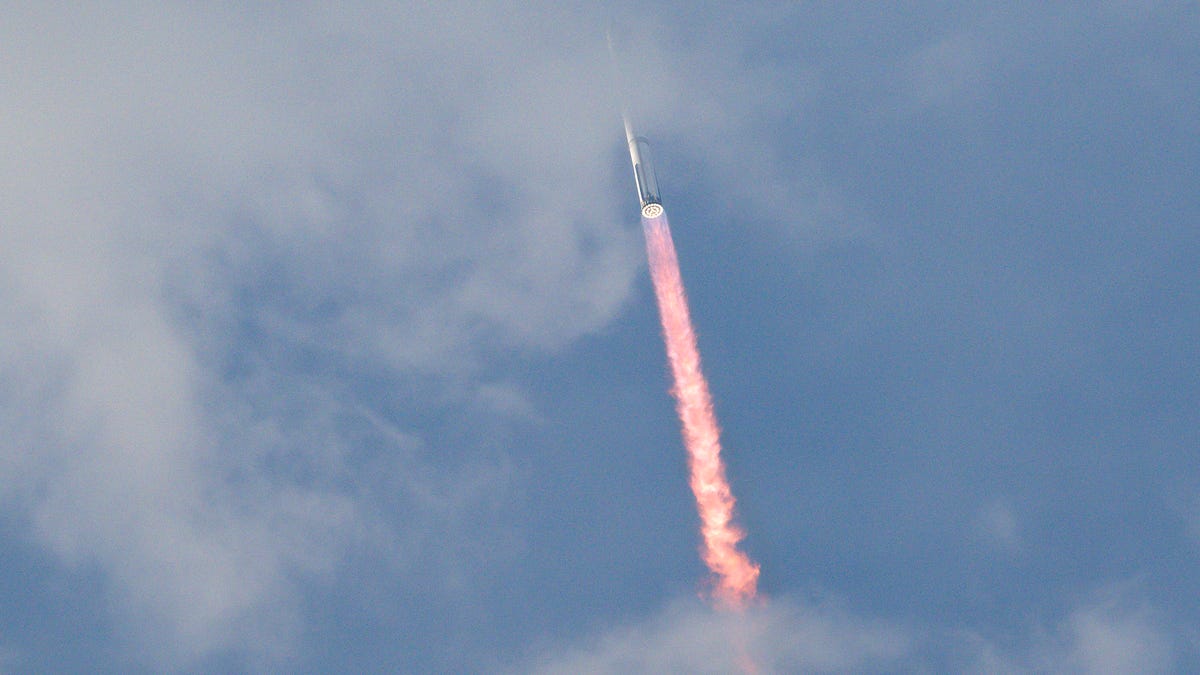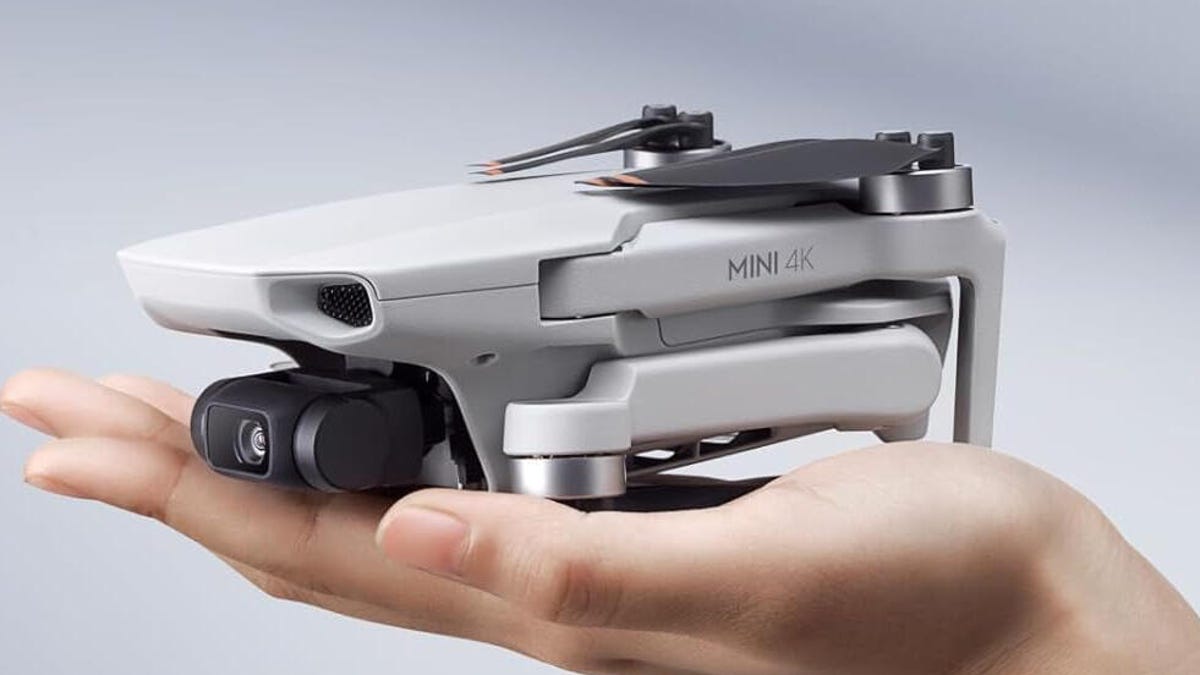Technologies
SpaceX Calls Mission 3 a Success, Despite Losing Starship: How to Rewatch
On its third attempt, SpaceX launched its Starship and cruised into space, but lost the rocket after reentry to Earth.

SpaceX launched its third Starship mission on Thursday, with the space exploration company owned by Elon Musk forging ahead after the first two attempts exploded after takeoff. SpaceX considers those first two missions successful, thanks to the data it was able to collect, and the third mission was the most successful of the bunch.
Shortly before 9:30 a.m. ET Thursday, the company posted three words to the Musk-owned X social media site: «Liftoff of Starship!» A 36-second video showed the rocket engines igniting and then Starship rising amid a cloud of exhaust smoke and up into the sky.
But the rocket did not complete the round trip, as you can see by rewatching the full test flight. «The ship has been lost. No splashdown today,» Dan Huot of SpaceX communications said on the stream. «But we were able to get through some of the early phases of reentry.»
SpaceX quality engineering manager Kate Tice noted on the stream that SpaceX wasn’t intending to recover Starship anyway, and had been planning to crash it into the ocean.
Starship is arguably the most ambitious effort for Musk, who owns the satellite-based internet company Starlink along with X, EV maker Tesla and the neurotechnology company Neuralink. The Starship missions are critical to SpaceX’s — and Musk’s — goal of getting to and eventually settling the moon and Mars.
With a new flight trajectory and hopes for new data insights, the space company’s third mission may prove to be its most important yet.
When did the Starship mission launch?
Starship’s third mission launched on March 14. It had been pending favorable weather and a license from the Federal Aviation Administration.
How to rewatch Starship mission 3
SpaceX set up livestreams for watching the third mission. One was the SpaceX account on X, and another was the SpaceX third mission landing page. You could also watch via CNET’s YouTube channel.
You can rewatch the launch on X, on the mission 3 page, or via CNET’s YouTube stream embedded here.
What SpaceX achieved in Starship mission 3
SpaceX’s third Starship mission was designed to test whether the spacecraft can complete certain tasks. After liftoff, the company planned to open Starship’s payload door and transfer its propellant from one part of the vehicle to another. For the first time, SpaceX also attempted to relight its Raptor engine while in space, a test that could be critical for future missions as it eventually tries to propel Starship through space.
Starship took a different flight path this time around, and had planned to land in the Indian Ocean instead of the Pacific Ocean until it lost the vehicle after reentry. In a statement, SpaceX said that the new flight path was designed to maximize «public safety,» but the company didn’t discuss how.
The new flight path also paved the way for SpaceX to try «in-space engine burns,» a reference to the company attempting to reignite the Raptor engine in space.
«Huge congratulations to the entire team for this incredible day: clean count (glad the shrimpers could get out in the nick of time!), liftoff, hot staging, Super Heavy boost back and coast (and likely a couple engines making mainstage during landing burn!), clean ship ‘insertion’ and coast, payload door cycling and prop transfer demo (to be confirmed!), and ship entry!» SpaceX President Gwynne Shotwell posted on X following the launch, naming the successful components of the test.
The mission was slated to last for 1 hour, 15 minutes. Previous missions, if completed, would have lasted 90 minutes.
What happened in the previous missions?
April mission: Forced detonation
The first Starship mission launched in April 2023. Early on in the mission, the two stages of Starship — the reusable upper stage, called Starship, and its Super Heavy first-stage booster — were supposed to separate. That didn’t happen, and for safety reasons, the SpaceX team was forced to detonate the vehicle just 4 minutes into the mission.
November mission: Explosion due to liquid oxygen
In November 2023, Starship launched on its second mission. That time around, Starship was able to separate its two stages and it reached nominal first-stage engine burn. However, Starship exploded 8 minutes after launch when it tried to vent its liquid oxygen. Oddly, the explosion may not have needed to happen. Earlier this year, Musk said on a real mission carrying payload — meaning the materials a spaceship carries to perform its scientific mission — liquid oxygen wouldn’t be onboard.
«Starship’s second flight test achieved a number of major milestones and provided invaluable data to continue rapidly developing Starship,» the company wrote on its site. «Each of these flight tests continue to be just that: a test. They aren’t occurring in a lab or on a test stand, but are putting flight hardware in a flight environment to maximize learning.»
Corinne Reichert contributed to this report.
Technologies
Repair Your Electronics at Home With This Rare Black Friday Discount on the iFixit Pro Tech Go Toolkit
This toolkit rarely goes on sale, so take advantage of this opportunity to snag it for only $40.

While Black Friday is an excellent time to replace old smartphones or broken laptops at a discount, not everyone is looking to splurge on new tech right now. If you’re shopping on a budget, or simply like the devices that you have and aren’t ready for an upgrade, investing in an electronics repair kit may be a wise option. We’ve spotted a discount on the iFixit Pro Tech Go tech toolkit, bringing its price down to just $40. But don’t delay, Black Friday is in its final hours and this kit rarely goes on sale.
The iFixit Pro Tech Go kit can be used to open up and repair a wide range of electronics, including smartphones, laptops, gaming consoles, and smart home devices for DIY repairs like battery or screen replacements. The kit has a 32-bit Moray driver kit, an opening tool, a suction handle, a jimmy, a spudger and angled tweezer to carefully open your devices.
Don’t miss any of our unbiased tech content and lab-based reviews. Add CNET as a preferred Google source.
Repairing your own tech can save you hundreds or even thousands of dollars. It also reduces e-waste by helping your devices last longer rather than throwing them away over minor issue. As of this year, all 50 states have introduced right-to-repair legislation designed to give people a legal right to fix their own tech, and several states have already signed it into law.
You can check out more deals from iFixIt now on Amazon. Plus, for other budget buys, check out our roundup of the best Black Friday deals under $100.
MOBILE DEALS OF THE WEEK
-
$749 (save $250)
-
$475 (save $175)
-
$499 (save $300)
-
$900 (save $400)
Why this deal matters
This is a record low price on a repair kit that rarely goes on sale. While we did see a modest discount on the iFixit Pro Tech Go toolkit during Amazon Prime Day in July, it was not marked down for October Prime Day or other sales such as Memorial Day or Labor Day. As such, it’s fairly unlikely that we’ll see it go on sale again this season, so this might be your last chance to get the toolkit for only $40.
Join Our Daily Deals Text Group!
Get hand-picked deals from CNET shopping experts straight to your phone.
By signing up, you confirm you are 16+ and agree to receive recurring marketing messages at the phone number provided. Consent is not a condition of purchase. Reply STOP to unsubscribe. Msg & data rates may apply. View our Privacy Policy and Terms of Use.
Technologies
Don’t Say Goodbye to Black Friday Yet. These Rare Apple Discounts Are Still Going Strong
Technologies
What a Ban Would Actually Mean for DJI Drone Owners and Holiday Shoppers
What’s the secret to a very un-merry shopping season? A brand new, unusable drone.

With Thanksgiving wrapped up and the Black Friday shopping sales here, if a DJI drone is on your holiday wish list, you might want to hit «buy» immediately. The company has issued a stark warning: Its drones could be banned from sale in the US, and the deadline is looming.
The Federal Communications Commission voted 3-0 at the end of October to «close loopholes» that allow tech deemed a «national security risk» to be sold in the US. In plain English, the US government is clearing the path to give DJI the same treatment it gave Chinese phone-maker Huawei, effectively banning its products from the American market.
The US government has deemed DJI, which is based in China, a security risk. It’s also considering a separate ban on TP-Link routers.
DJI is already sounding the alarm, posting on Instagram that a «deadline that could decide DJI’s fate in the US is just 43 days away» (now 19 days away). The company is warning that without an audit, its products could face an «automatic ban.» The US government has long labeled the Chinese drone maker a security risk, and it looks like the hammer might finally be coming down right before the holidays.
Don’t miss any of our unbiased tech content and lab-based reviews. Add CNET as a preferred Google source.
The vote isn’t the end of the road, however. Future bans would need to target specific products and would require a period of public consultation. But it appears the groundwork is being set for the FCC to block sales of future and some existing DJI drones from US shores, as well as products that use DJI technology.
The government has called for a DJI audit by the end of the year, but if that doesn’t happen, DJI drone products could be banned for sale by default under a national security law.
DJI asks for a security audit before any ban
A representative for DJI told CNET that while the FCC vote references a rule change that doesn’t currently apply to DJI specifically, the National Defense Authorization Act deadline in December would put Chinese companies like it on the FCC’s ban list, «without any evidence of wrongdoing or the right to appeal.»
Adam Welsh, head of global policy at DJI, said the company has repeatedly said it would be open to audit, but that «more than 10 months have now passed with no sign that the process has begun.»
«The US government has every right to strengthen national security measures, but this must go hand in hand with due process, fairness, and transparency,» Welsh said.
Welsh said DJI is urging the government to start the audit process or grant an extension.
Will DJI drone owners need to give them up?
Because the ban would apply to new sales, not drones that have already been sold, a DJI drone you already own would still be legal to use — at least under current rules.
Government agencies, however, are prohibited from purchasing or using drones from Chinese companies, including DJI.
DJI’s drones consistently rank high in their product category. In January, they dominated CNET’s list of best drones for 2025. But some of the company’s newest products, such as the DJI Mavic 4 Pro, haven’t been available for sale in the United States.
Even DJI products that are not yet banned may be hard to find. The website UAV Coach has posted a guide to the bans and reports that, due to inventory issues, most DJI drone models are sold out at retailers regardless of future FCC action.
-

 Technologies3 года ago
Technologies3 года agoTech Companies Need to Be Held Accountable for Security, Experts Say
-

 Technologies3 года ago
Technologies3 года agoBest Handheld Game Console in 2023
-

 Technologies3 года ago
Technologies3 года agoTighten Up Your VR Game With the Best Head Straps for Quest 2
-

 Technologies4 года ago
Technologies4 года agoBlack Friday 2021: The best deals on TVs, headphones, kitchenware, and more
-

 Technologies4 года ago
Technologies4 года agoVerum, Wickr and Threema: next generation secured messengers
-

 Technologies4 года ago
Technologies4 года agoGoogle to require vaccinations as Silicon Valley rethinks return-to-office policies
-

 Technologies4 года ago
Technologies4 года agoOlivia Harlan Dekker for Verum Messenger
-

 Technologies4 года ago
Technologies4 года agoiPhone 13 event: How to watch Apple’s big announcement tomorrow
